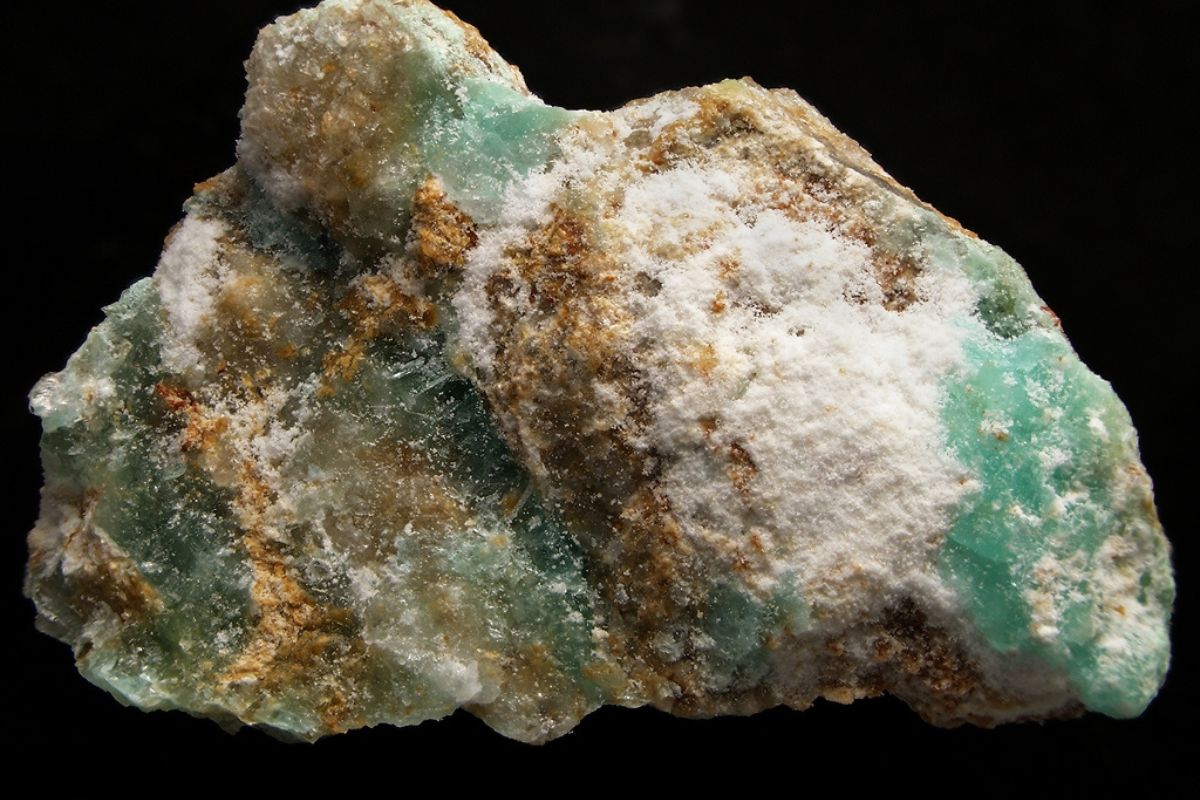
Aubertite is a rare mineral that captures the interest of geologists and collectors alike. Found primarily in Chile, this vibrant blue mineral is a sulfate of copper and aluminum. What makes Aubertite special? Its striking color and unique chemical composition set it apart from other minerals. Named after the French mineralogist Jean Aubert, it was first discovered in the 1980s. Why should you care about Aubertite? Beyond its beauty, it offers insights into the geological processes that shape our planet. Whether you're a budding geologist or just curious about the natural world, learning about Aubertite can be both fun and educational.
Key Takeaways:
- Aubertite is a rare, vibrant blue mineral containing copper and aluminum. It's soft, soluble in water, and found in limited regions like France, Chile, and Bolivia. Geologists study it to understand copper deposits.
- Aubertite is prized by collectors for its unique color and rarity. It's used in education, scientific research, and environmental studies due to its distinct properties and solubility in water.
What is Aubertite?
Aubertite is a rare mineral that has fascinated geologists and mineral enthusiasts alike. Its unique properties and limited occurrence make it a subject of interest. Let's dive into some intriguing facts about this mineral.
- Aubertite is a sulfate mineral that contains copper, aluminum, and hydrogen.
- It was first discovered in the Aubert Mine in France, which is how it got its name.
- The mineral typically forms in oxidized zones of copper deposits.
- Aubertite has a vibrant blue color, making it visually striking.
- It crystallizes in the triclinic system, which means its crystal structure is less symmetrical than other systems.
- The mineral is often found in association with other copper minerals like brochantite and antlerite.
- Aubertite's hardness on the Mohs scale is about 3, making it relatively soft.
- It has a vitreous luster, giving it a glass-like appearance when light reflects off its surface.
- The mineral is soluble in water, which means it can dissolve over time when exposed to moisture.
- Aubertite's chemical formula is CuAl(SO4)2Cl·14H2O, indicating it contains water molecules in its structure.
Where Can You Find Aubertite?
Aubertite is not a common mineral, and its occurrences are limited to specific regions. Here are some places where it has been found.
- Besides France, Aubertite has been discovered in the Atacama Desert in Chile.
- The mineral is also found in Bolivia, particularly in areas rich in copper deposits.
- Aubertite occurrences have been reported in the United States, especially in Arizona.
- Some specimens have been found in Australia, though these are quite rare.
- Mining sites in Peru have also yielded small amounts of Aubertite.
Uses and Applications of Aubertite
While Aubertite is not widely used in industrial applications, it has some niche uses and is highly valued by collectors.
- Aubertite specimens are prized by mineral collectors for their unique color and rarity.
- The mineral is sometimes used in educational settings to teach about sulfate minerals and crystallography.
- Geologists study Aubertite to understand the oxidation processes in copper deposits.
- It can be used as a reference material in scientific research due to its distinct properties.
- Aubertite's solubility in water makes it a subject of interest in environmental studies, particularly in understanding mineral dissolution.
Interesting Facts About Aubertite
Here are some additional fascinating tidbits about this rare mineral.
- Aubertite was named after the French mineralogist who first described it, Jean Aubert.
- The mineral's blue color is due to the presence of copper ions in its structure.
- Aubertite crystals are often small, rarely exceeding a few millimeters in size.
- The mineral can form pseudomorphs, where it replaces another mineral while retaining the original mineral's shape.
- Aubertite's rarity makes it a valuable addition to any mineral collection, often fetching high prices among collectors.
Final Thoughts on Aubertite
Aubertite, a rare and fascinating mineral, holds a unique place in the world of geology. Its striking blue-green color and crystal structure make it a subject of interest for both scientists and collectors. Found primarily in Chile, this mineral's composition includes copper, aluminum, and sulfate, contributing to its distinct appearance. Despite its rarity, aubertite offers valuable insights into the geological processes that create such minerals. Understanding aubertite not only enriches our knowledge of Earth's mineral diversity but also highlights the intricate beauty hidden within our planet. Whether you're a seasoned geologist or a curious enthusiast, aubertite's story is a reminder of the wonders waiting to be discovered beneath our feet. Keep exploring, and who knows what other hidden gems you'll find in the vast world of minerals.
Frequently Asked Questions
Was this page helpful?
Our commitment to delivering trustworthy and engaging content is at the heart of what we do. Each fact on our site is contributed by real users like you, bringing a wealth of diverse insights and information. To ensure the highest standards of accuracy and reliability, our dedicated editors meticulously review each submission. This process guarantees that the facts we share are not only fascinating but also credible. Trust in our commitment to quality and authenticity as you explore and learn with us.


